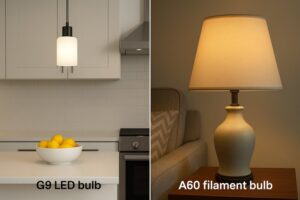Your business is upgrading to better lighting, but now you have a pile of old LED bulbs. Just throwing them in the trash feels wasteful and irresponsible, potentially harming the environment.
LED bulbs are electronic waste (e-waste) and should not go in regular trash. They must be taken to a designated e-waste recycling facility, a municipal collection event, or a retail take-back program to be disposed of safely.
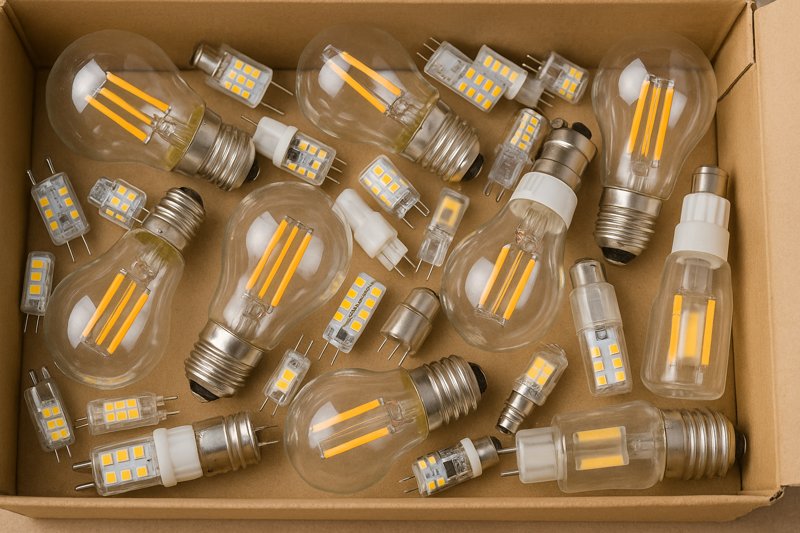
A long-time client, a facilities manager for a large hotel chain in the UK, called me last year. He was undertaking a huge lighting retrofit across five properties, replacing thousands of lights with our new high-efficiency G95 bulbs. His question wasn't about the new product; it was about the old one. "Wallson," he asked, "What do I do with a pallet of old LED bulbs? I can't just dump them." His question gets to the heart of what it means to be a responsible business. Our duty doesn't end when a product is sold; it extends through its entire lifecycle.
Why Can't You Just Throw LED Bulbs in the Regular Trash?
It's convenient to just toss-and-go. But a nagging feeling tells you an electronic item like an LED bulb doesn't belong in a landfill with food scraps and paper.
Because they are electronics, not simple glass. They contain circuit boards, diodes, and trace amounts of metals that, while safe in your building, can be harmful if they leach into the ground from a landfill.
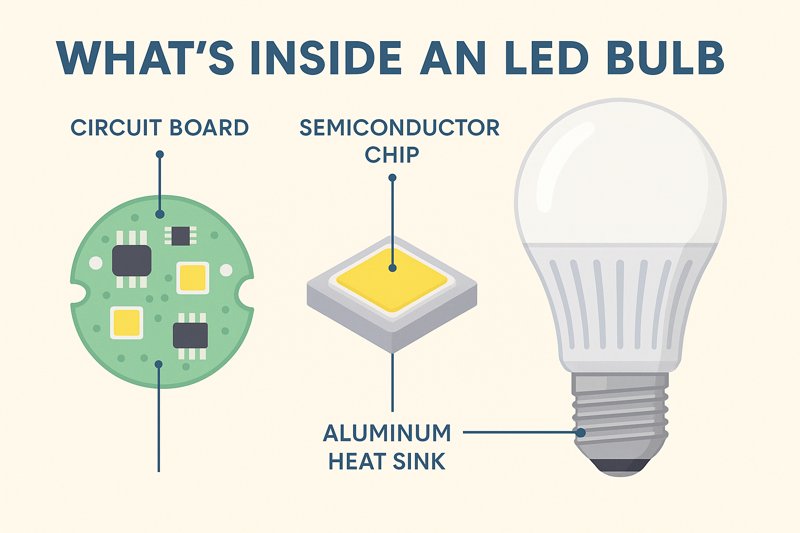
To understand the 'why', we have to look inside the bulb. As a manufacturer, I deal with these components every day. Unlike an old incandescent bulb, which was mostly just inert glass and a simple tungsten filament, a modern LED is a sophisticated electronic device. Inside that familiar shape, you'll find a small circuit board called a driver, which manages the power. You'll find the LED chips themselves, which are semiconductors. And you'll find an aluminum heat sink, essential for pulling heat away from the electronics to ensure a long life. While our Omita bulbs are RoHS compliant, meaning they are free from the most hazardous substances like mercury, they still contain tiny amounts of materials like lead and arsenic in the solder and electronic components. In a landfill, these materials can eventually break down and contaminate soil and groundwater. Recycling isn't just about saving resources; it's about containing these elements responsibly.
Comparing Bulb Disposal
| Bulb Type | Key Component(s) of Concern | Landfill Safe? | Best Disposal Method |
|---|---|---|---|
| Incandescent | Mostly inert glass and metal. | Generally Yes | Trash (but recycling is better for glass/metal) |
| CFL (Compact Fluorescent)1 | Mercury Vapor | No (Hazardous) | Hazardous Waste Recycling |
| LED (Light-Emitting Diode) | Electronic Components (Circuit Board, Chips) | No (E-Waste) | E-Waste Recycling2 |
What's the Practical Process for Recycling LED Bulbs?
You know you need to recycle them, but the process seems confusing. This uncertainty leads to storerooms filling up with old bulbs, creating a future problem for your business.
Start by checking your local municipality's website for "e-waste disposal." For smaller amounts, use online locators or retail take-back programs. For large quantities, contract a certified commercial e-waste recycler.
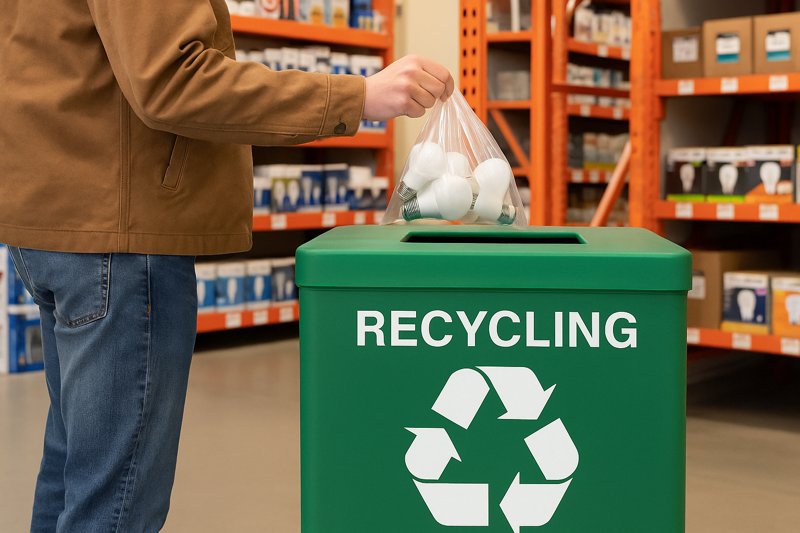
Finding the right place can feel like a challenge, but it is simpler than it seems once you know the options. The best method depends on the quantity of bulbs you have. For a business owner like Jacky in the U.S. or a manager in Europe, the process can be broken down into a few clear steps.
Step 1: Check with Your Local Authority
Your first stop should always be your local city or county waste management website. Search for terms like "e-waste," "household hazardous waste," or "universal waste." They will have the most accurate information on local drop-off centers, collection days, and specific rules for businesses versus residents.
Step 2: Use Online Search Tools & Retail Programs
For smaller quantities, several great online tools can help. Websites like Earth911 or Call2Recycle in the USA have searchable databases where you can enter your zip code and "LED bulbs" to find nearby drop-off locations. Many large retailers, like Home Depot, Lowe's, and specialty lighting stores, have in-store collection bins, making it incredibly convenient.
Step 1: Check with Your Local Authority
Your first stop should always be your local city or county waste management website. Search for terms like "e-waste3," "household hazardous waste," or "universal waste." They will have the most accurate information on local drop-off centers, collection days, and specific rules for businesses versus residents.
Step 2: Use Online Search Tools & Retail Programs
For smaller quantities, several great online tools can help. Websites like Earth911 or Call2Recycle in the USA have searchable databases where you can enter your zip code and "LED bulbs" to find nearby drop-off locations. Many large retailers, like Home Depot, Lowe's, and specialty lighting stores, have in-store collection bins, making it incredibly convenient.
Step 3: For Bulk Quantities (The Business Solution)
If you are like my hotel client and have hundreds or thousands of bulbs from a major renovation, a retail drop-off bin isn't practical. In this case, you need to contact a commercial e-waste recycling4 service. These companies specialize in handling large volumes of electronics for businesses. They provide documentation for your records, ensuring you are compliant with all environmental regulations. A simple search for "commercial e-waste recycling near me" will provide a list of certified professional services that can schedule a pickup directly from your facility.
What Actually Happens to an LED Bulb at a Recycling Facility?
You drop the bulbs into a bin, but what happens next? There's a lingering doubt that it all just ends up in a landfill in another country, making your effort pointless.
The bulbs are safely crushed, and the materials are separated using advanced techniques. Glass, metals like aluminum, and the electronic boards are sorted and sent to be used as raw materials for new products.
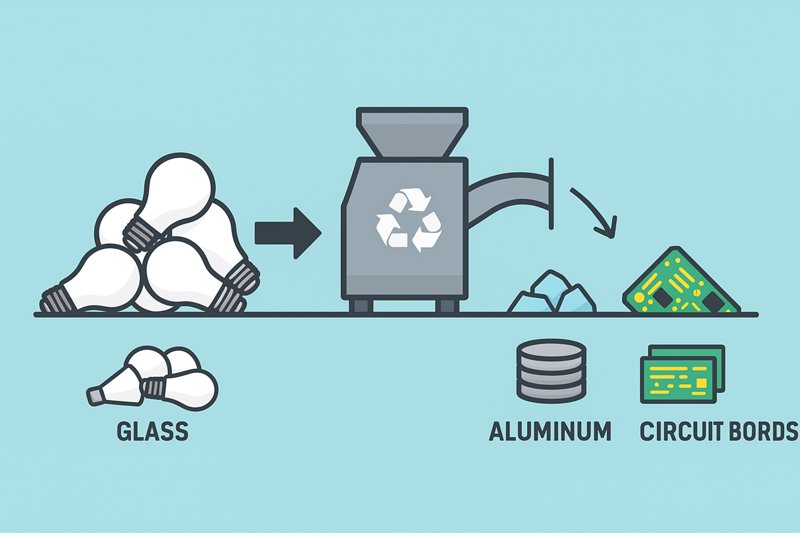
As a manufacturer, I find this process fascinating because it's the reverse of what we do. We assemble these materials; recyclers disassemble them. It's a highly technical process that ensures very little goes to waste. First, the collected bulbs are transported to a specialized facility. They are then placed into a shredding machine, which is enclosed to capture any dust. Once crushed, the mixed materials begin a separation journey. A series of powerful magnets are passed over the material to pull out all the ferrous metals (like steel). Then, a device called an eddy current separator is used to repel and sort the non-ferrous metals, which is how the valuable aluminum from the heat sinks is recovered. The remaining mix of glass and plastics can be further separated using air or water jets. The most valuable part, the circuit boards, are collected and sent for further processing where heat and chemical processes are used to extract the small amounts of precious metals like gold, silver, and copper. It’s a true circular process, turning what was once waste back into a valuable commodity that can be used to make new products.
Conclusion
Recycling LEDs is a simple, responsible act. It protects our environment, recovers valuable materials for a circular economy, and shows your customers that you care about the entire product lifecycle.
-
Understanding CFL disposal is crucial due to mercury content; explore this link for safe recycling options. ↩
-
E-Waste Recycling is vital for environmental safety; learn more about its benefits and processes through this resource. ↩
-
Exploring this link will provide you with essential information on e-waste recycling options and local regulations. ↩
-
This resource will help businesses discover certified services for bulk e-waste disposal, ensuring compliance and convenience. ↩





